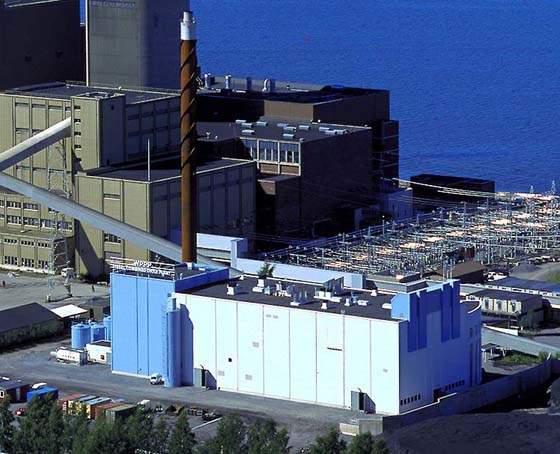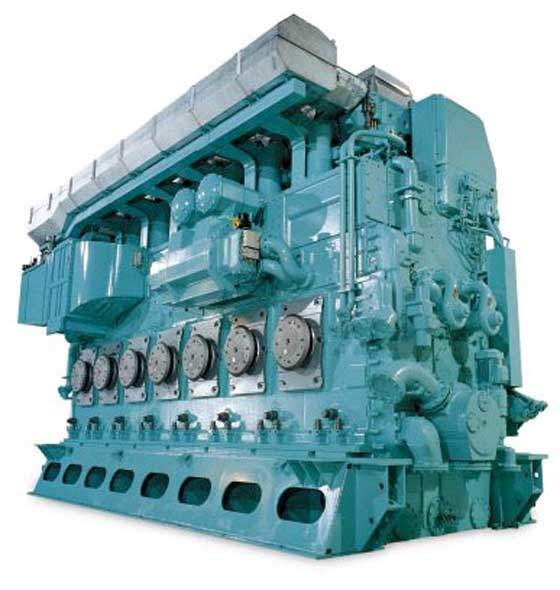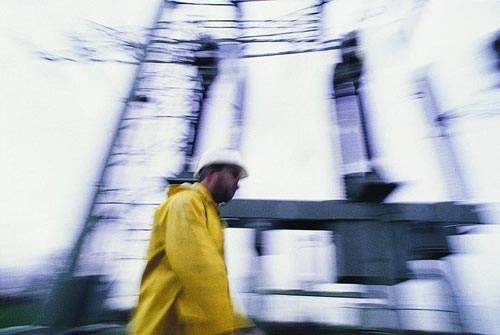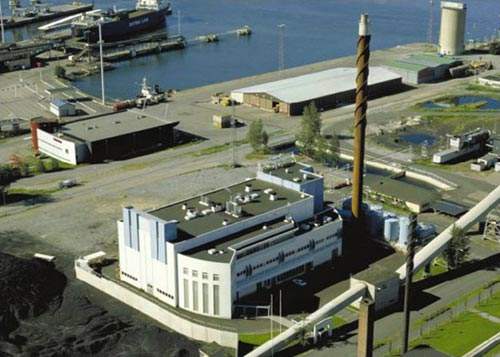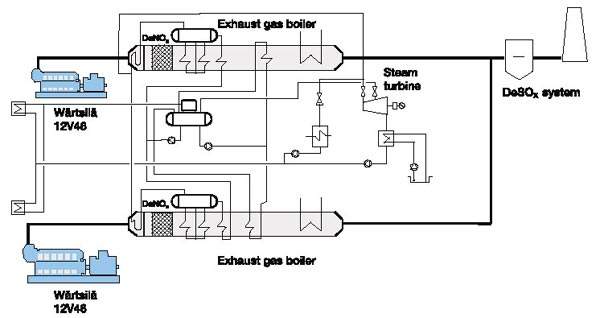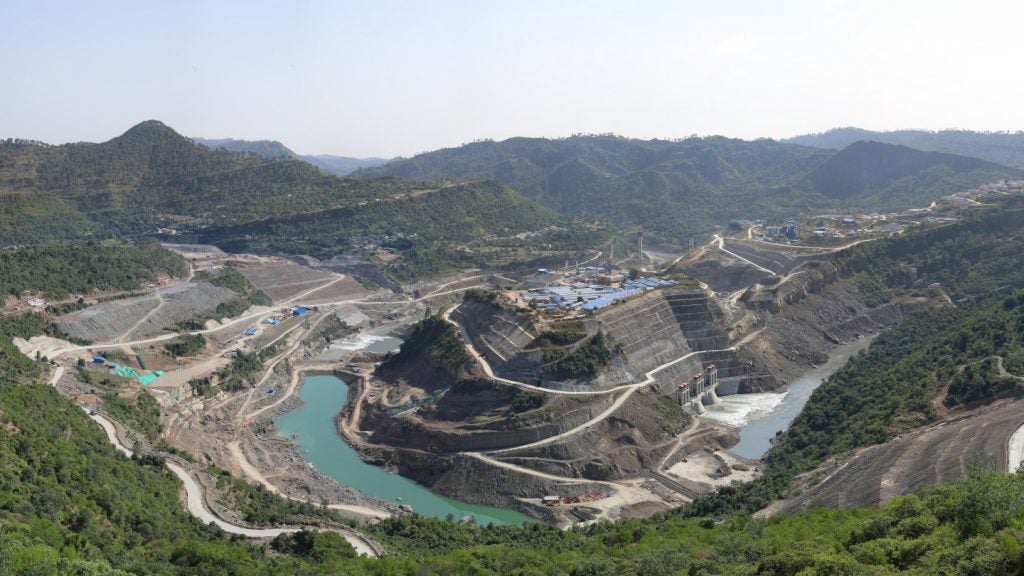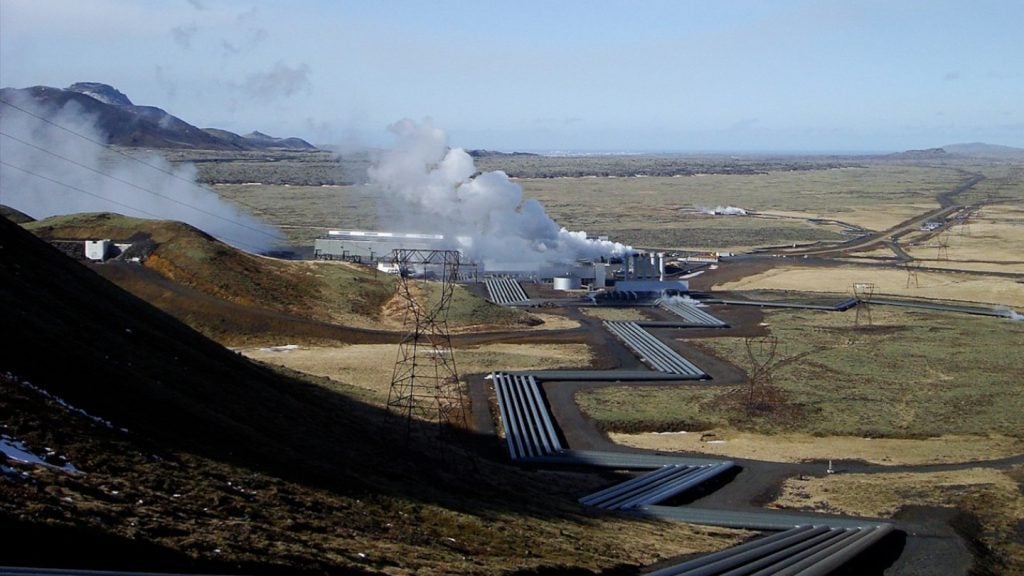The 38MW Wasa Pilot Power Plant (WPPP) in Finland aims for 55% efficiency – some 9% better than the average diesel plant. Emissions have been greatly reduced by ABB’s desulphurisation equipment.
Completed in 1998, the Wasa plant is near Vaasa, in the south west corner of Finland. Ordered in 1996, the plant’s construction began in 1997 and it went on-line in 1998. The plant is on the coast, and seawater is used to cool the steam turbine. The plant, which operates all year round, generates power for the national grid and sells district heating to the surrounding area. It has a total capacity of 38MW and cost FIM160 million ($35 million).
Wasa started its commercial operations in 1999 and in 2000 it made plans to convert the plant fuel to bitumen-based Orimulsion. Work on the plant’s upgrade began in May 2000 with the change of fuel.
Technology
Although it is planned to be commercially viable, the Wasa project was also a showcase for cutting-edge technology. Given the strong trend of developed markets towards environmental regulation, low emissions were important for both economic and environmental reasons. This importance is likely to increase in future, with green power generation becoming an ever more important part of the overall market.
There are three groups of beneficiaries of the WPPP project. The utilities are able to encourage more efficient technology whilst simultaneously participating in a profitable venture. Etela-Pohjanmaan Voima Oy will handle electricity sales, and Vaasan Sahko Oy will be responsible for heat sales.
The public sector agencies, the government of Finland and the EU put up about a quarter of the project’s total funding. The twin attractions that justified the funding were the hi-tech nature of the project and its environmental benefits. The technology was state-of-the-art, and all European governments are seeking to encourage technological innovation.
Suppliers
The equipment suppliers are Wartsila and ABB. These companies are important power market competitors locally as well as being major players globally. As a result of the project, they gained the opportunity to test out new technologies to help product development, while also convincing potential customers of their worth. Thus, the plant was seen as both a mechanism for technological refinement and a tool to promote sales.
As well as diesel engines, the plant includes a steam turbine, a two-pressure steam system, desulphurisation, highly efficient SCR, DeSOx and DeNOx equipment and a heat recovery system. The plant has a combined-cycle design, as well as a district heating element.
The most striking claim for the new plant is its high level of electricity generation efficiency. Wartsila worked on reducing engine cooling and increasing the temperature of the process media. Wartsila also improved the design of the steam turbine part of the cycle. The use of exhaust gas at higher temperatures is a key part of the hot combustion process.
Fuel conversion
A hired storage tank of 16,000m3 capacity is being used to store the fuel Orimulsion. The first shipment of the fuel arrived in August 2000 and by September the fuel storage and handling system were complete.
Initial tests on the Orimulsion were performed in October, while the commercial operation of the fuel began the next month.
Orimulsion reduces emissions from the plant. It also reduces the NOx emissions of the engines. In addition the fuel, which is cheaper than heavy fuel, reduces the plant’s operating cost.
Engine improvements
The higher gas temperatures are allowed by improvements in the engine components. The top of the piston can be uncooled because it is made of a super alloy. The anti polishing ring in the top of the cylinder liner is also made from high temperature materials. This acts as insulation, reducing cooling. The top of the cylinder has a separately cooled fire deck.
The higher temperature also entails tougher exhaust valves, constructed using laser coating and advanced materials. The higher temperatures are also achieved by lower air flows. These can be attained by more efficient valves (with reduced overlap between inlet and exhaust) and by raising the charge air temperature / reducing the charge air pressure. The second option decreases thermal efficiency, but the design compensates for this by isolating the combustion chamber.
The engine is designed to maximise the effect of mechanical work on exhaust gas energy. Finally, bigger diesel engines have a lower specific fuel oil consumption than smaller ones. It is due in part to this that the diesel engines in WPPP are 17MWe.
Plant expectations
The plant originally ran at around 53% efficiency, rising to 55%. Conventional plants achieve around 40% efficiency, with most diesel plants achieving a 6% higher figure. Emissions are also lowered by the desulphurisation technology. Reflecting the experimental nature of the plant, several biodegradable oils can be used. To begin with, the plant is using low-sulphur, heavy fuel oil.

